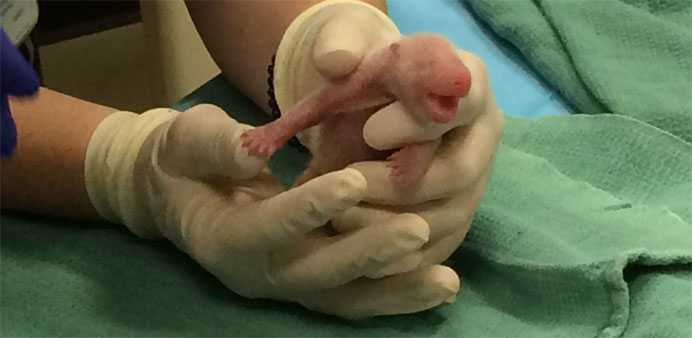Reuters/Washington
National Zoo staff are keeping a close eye on giant panda Mei Xiang's newborn twins, given the cubs' fragile state just days after their birth, the zoo's lead veterinarian said on Monday.
‘The cubs are doing pretty well. These early days everything's still touch and go, so we're watching them closely but we're very hopeful right now,’ Dr. Brandie Smith told CNN.
Mei Xiang, a star tourist draw, took staff by surprise on Saturday by giving birth to the twins about four-and-a-half hours apart after being artificially inseminated. Giant pandas are among the world's most endangered species.
Smith said the new cubs are so tiny and fragile that problems could still arise, anything from a congenital defect to difficulties with the mother panda's ability to care for the two new small babies, each still fur-less and about the size of a stick of butter.
‘Almost anything could go wrong in these first few days,’ she told CNN's ‘New Day’ program. Smith is the zoo's associate director for animal care sciences, overseeing care for all of its mammals.
Zoo staff have been occasionally switching out one cub and keeping it in an incubator, tracking each cub's progress by measuring and weighing them each time. Staff are also continually monitoring Mei Xiang.
The mother panda was artificially inseminated in April with sperm from Hui Hui, a panda in China, and from the National Zoo's Tian Tian. Zoo officials have said they do not yet know which insemination was successful, and that it is possible the twins have different fathers.
Giant pandas, native to China, have a very low reproductive rate, especially in captivity. There are about 300 giant pandas in captivity and roughly 1,600 in the wild.



